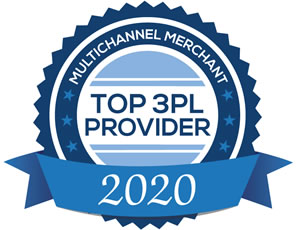
The e-commerce landscape is littered with buzzwords and acronyms. We have compiled a short list of the most common terms.
3PL: Third Party Logistics provider. Originally a military term, a third-party logistics company provides outsourced logistics services. 3PL’s may manage anything from distribution, movement of resources, or fulfillment.
API: An Application Programming Interface (API) is technically a set of protocols, tools and procedures used for programming software. In e-commerce, API’s are used to facilitate processes such as postage calculation, payments and order transmission. The interface is a common ground that allows two independent software systems to communicate.
B2B: Business to Business transactions are between two businesses. This usually describes a wholesale or distributor relationship.
B2C: Business to Consumer transactions are between a company and an individual customer. Some companies handle both B2B and B2C transactions.
Brick and click: A fun new term to describe hybrid businesses that have both an online shopping site as well as at least one brick-and-mortar location.
Brick and mortar: A business with physical storefronts.
Blockchain: A blockchain is a continuously growing list of records that are linked together in an encrypted and secure manner. The “blocks” contain timestamp and transaction information and are essentially tamper-proof. The chain is a sort of decentralized database network that allows people or companies to interact with each other with security and transparency. Currently, the most common example of blockchain technology is cryptocurrency, such as Bitcoin. But watch for this term to appear more frequently in manufacturing and supply chain in the next few years.
CRM: Customer Relationship Management (CRM) refers to the strategies and communication a business uses to manage customer interactions throughout the relationship. This can include welcome emails, follow up offers, order confirmations, social media messages, and more. CRM activities are intended to automate and improve the customer experience in order to increase retention, engagement and satisfaction.
e-Commerce: Electronic commerce, which encompasses all online transactions, indicates the buying and selling of products or services via the internet. There are five types of ecommerce businesses.
e-Commerce Shopping Cart: An e-commerce shopping cart, or simply a “shopping cart,” is a program/service that a website uses to take and process orders. These are usually part of a larger website platform, which is used to administer the entire site and all of its processes. Cart systems include Shopify, BigCommerce, WooCommerce, Ultracart, Stichlabs and more.
ERP: Enterprise resource planning (ERP) describes the process by which a company manages the key aspects of its business. An ERP system integrates purchasing, inventory, finance, payroll, marketing, and sales in one package. This term is primarily used in manufacturing planning, but any business can make use of an ERP system.
Fulfillment: All activities associated with harvesting, processing, and shipping an order. E-commerce fulfillment means receiving, picking, packing, and shipping orders to the customer.
IoT: The Internet of Things is the network of devices, vehicles, appliances and other items embedded with electronics, software, and connectivity. They are able to connect and exchange information. Experts estimate that the IoT will consist of about 30 billion objects by 2020.
JIT: The just-in-time inventory (JIT) strategy is used to increase efficiency and decrease waste by receiving goods only as they are needed in the production process, thereby reducing carrying costs.
Legacy System: A legacy system is an old method, technology, computer system, or application program, "of, relating to, or being a previous or outdated computer system."
m-Commerce: Mobile commerce, a type of e-Commerce. This term refers all transactions on tablets and phones. In 2017, roughly $1.8B in Black Friday sales alone (almost 40%) were conducted on wireless devices.
Mobile-responsive (or simply, responsive): A responsive website changes its look automatically to fit the device you're reading it on. Responive design has been aimed at four types of screens: the widescreen desktop monitor, the smaller desktop (or laptop), the tablet and the smartphone.
MFC (Micro-Fulfillment Center): Networked MFCs are stocked through fulfillment by the larger supply chain. They then use automation to fulfill orders for a small region, improving speed and efficiency of last-mile delivery. Autonomous delivery from these MFCs completes the chain. Albertsons is building a $3M MFC in one of their stores this year.
Online Marketplace: A site that organizes, hosts, facilitates an online sale. These include Amazon, Ebay, Wish, Jet, Bonanza, Alibaba, Walmart and many more. Each marketplace has its own protocols and databases, requiring multiple integrations or a multi-channel integration.
Payment Gateway: Merchants use a payment gateway to authorize and charge credit cards and direct payments for both online and brick and mortar businesses. This is an application that facilitates communication between the shopping cart and the bank.
Pick and Pack: Literally, pick and pack means to pick the items for an order and pack them for shipping. Warehouse pick and pack services typically include inventory receiving, storage, auditing, as well as full order processing.
Supply Chain: The overall picture of the businesses involved in producing, supplying, moving products. The supply chain is the network of companies, people, activities, information, and resources involved in moving a product or service from supplier to customer.
Warehouse-as-a-Service (WaaS): In response to increased eCommerce shipping, lack of warehouse space, and the need for speed in delivery, warehousing-as-a-service providers are often networked shared facilities that allow for short term inventory and fulfillment. This strategy works well for seasonal merchandise. Allows for greater geographic coverage in a shorter time.
Website Platform: The software running the website. Functions range from content management, order processing, product catalog and inventory management, customer contact, sales reporting and more. With a true platform, functionality can be expanded using modules or extensions.
Did we overlook a term? Feel free to email us with your questions.
Business Tips and Industry News
For more news and tips on all things business and e-commerce, visit our e-zine. Our e-zine is also available as an rss feed.



